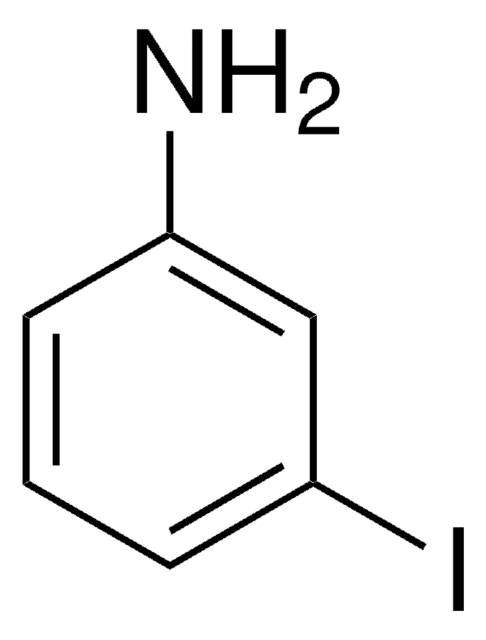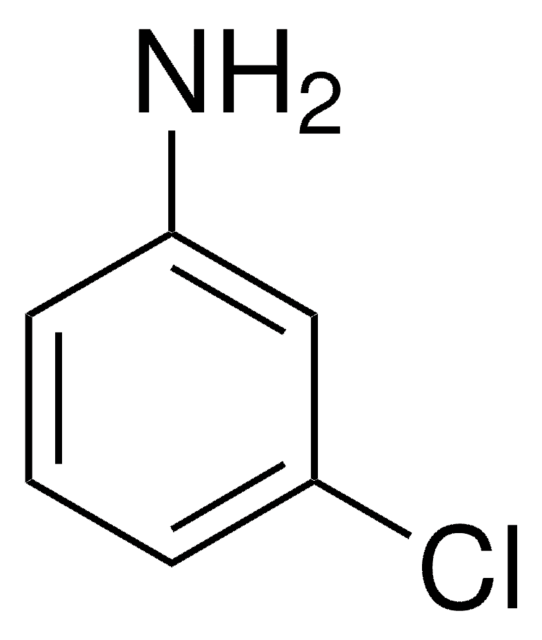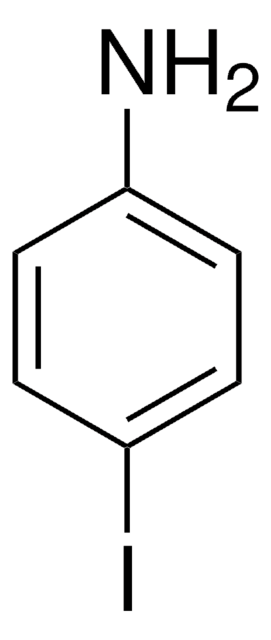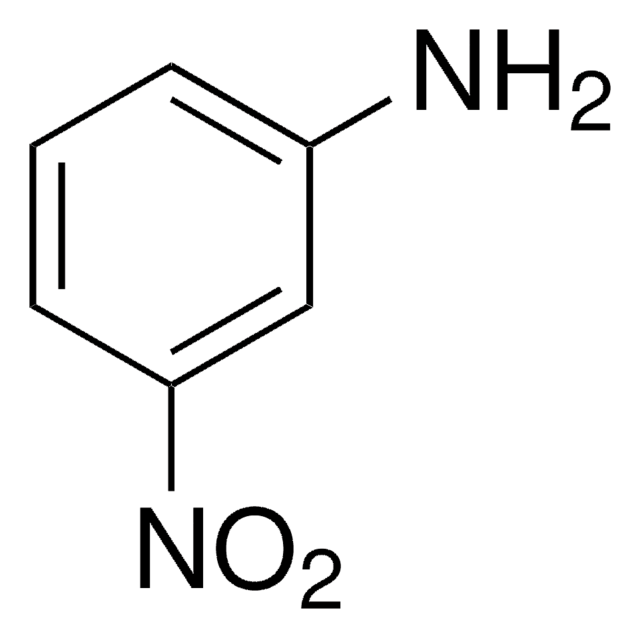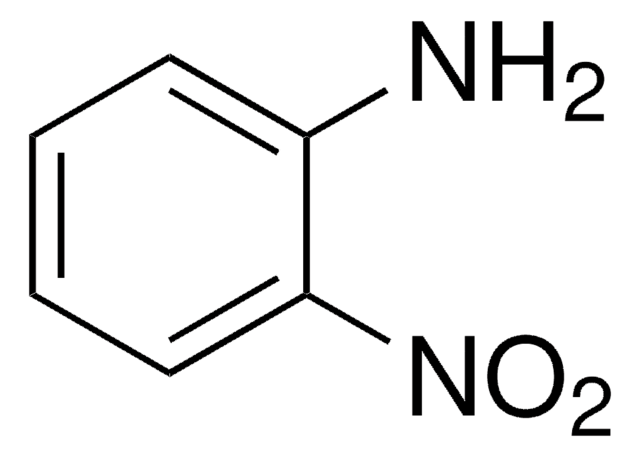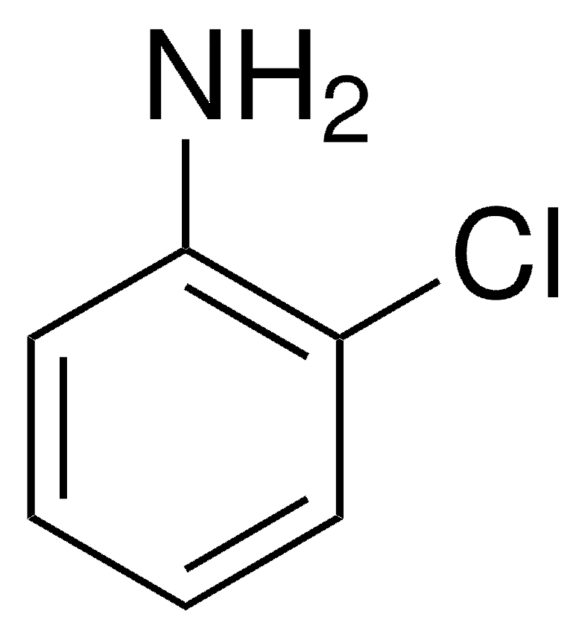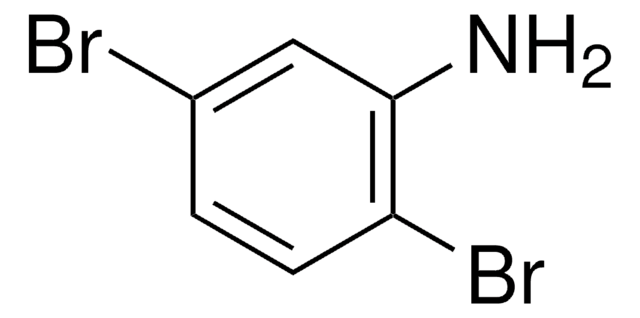180025
3-Bromoaniline
98%
Sinónimos:
(3-Bromophenyl)amine, (m-Bromophenyl)amine, 1-Amino-3-bromobenzene, 3-Amino-1-bromobenzene, 3-Bromobenzenamine, m-Aminobromobenzene, m-Bromoaniline
About This Item
Productos recomendados
Nivel de calidad
Análisis
98%
formulario
liquid
índice de refracción
n20/D 1.625 (lit.)
bp
251 °C (lit.)
mp
15-18 °C (lit.)
densidad
1.58 g/mL at 25 °C (lit.)
grupo funcional
bromo
cadena SMILES
Nc1cccc(Br)c1
InChI
1S/C6H6BrN/c7-5-2-1-3-6(8)4-5/h1-4H,8H2
Clave InChI
DHYHYLGCQVVLOQ-UHFFFAOYSA-N
¿Está buscando productos similares? Visita Guía de comparación de productos
Descripción general
Aplicación
Palabra de señalización
Danger
Frases de peligro
Consejos de prudencia
Clasificaciones de peligro
Acute Tox. 3 Dermal - Acute Tox. 3 Inhalation - Acute Tox. 3 Oral - Aquatic Acute 1 - Aquatic Chronic 1 - STOT RE 2
Código de clase de almacenamiento
6.1C - Combustible acute toxic Cat.3 / toxic compounds or compounds which causing chronic effects
Clase de riesgo para el agua (WGK)
WGK 3
Punto de inflamabilidad (°F)
>446.0 °F
Punto de inflamabilidad (°C)
> 230 °C
Equipo de protección personal
Eyeshields, Faceshields, Gloves, type ABEK (EN14387) respirator filter
Elija entre una de las versiones más recientes:
¿Ya tiene este producto?
Encuentre la documentación para los productos que ha comprado recientemente en la Biblioteca de documentos.
Los clientes también vieron
Nuestro equipo de científicos tiene experiencia en todas las áreas de investigación: Ciencias de la vida, Ciencia de los materiales, Síntesis química, Cromatografía, Analítica y muchas otras.
Póngase en contacto con el Servicio técnico

